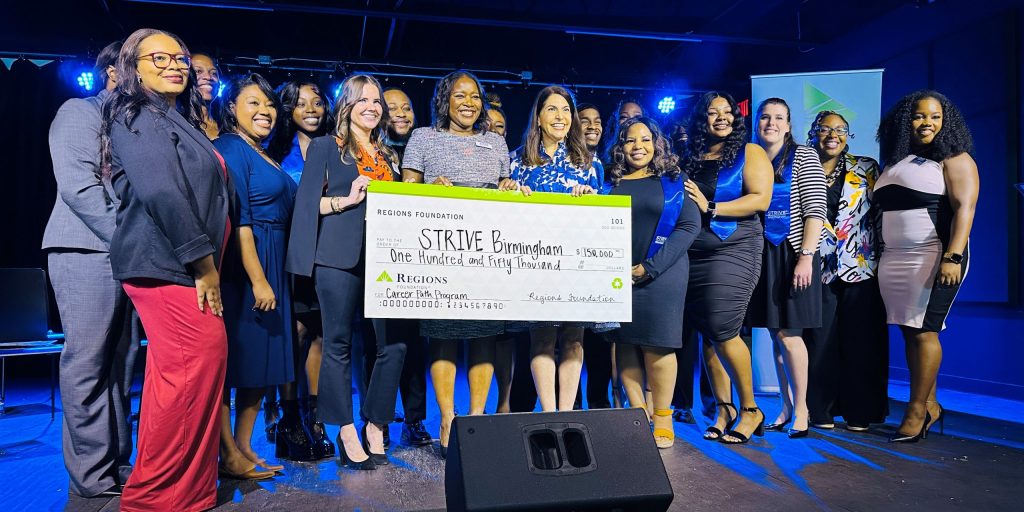The University of Alabama is leading a program among six state universities to prepare secondary education students to fill the need for trained computer science teachers in the state.
The statewide program builds off a successful computer science education training program at UA. With a nearly $1 million grant from the National Science Foundation, this new phase aims to train 90 secondary education students over the next three years. The program’s goal is to help high schools comply with state mandates to offer computer science in the secondary grades.
“We are not producing enough teachers prepared to lead instruction in coding and computer science, which are critical concepts and skills for tomorrow’s workforce,” said Dr. Jeff Gray, professor of computer science helping lead the grant. “Through this collaboration with other universities, we plan to train a diverse group of pre-service teachers across Alabama and help each campus create a sustainable pathway to teacher certification for computer science.”
The new project moves students through three phases of training. The first phase, offered each spring, requires secondary education students to take an online course through UA focused on the curriculum of the Advanced Placement computer science course already offered in many of the state’s high schools. Cost of tuition and fees will be covered by the grant and a stipend awarded upon completion.
Secondary education students may choose to move to the second and third phase of training after the spring course. The second phase will require a hybrid course during the May interim term that leads to a certification to teach the AP course “Computer Sciences Principles” in Alabama high schools. The third phase requires a preparation course for taking the computer science content certification teaching exam, which leads to full certification as a computer science teacher. Both the second and third phases, as well as the certification exam, will be funded by the grant and include stipends.
This new training builds off a previous NSF award geared toward overlaying these courses and experiences on top of an already existing degree path for secondary education. Dr. Jeremy Zelkowski, associate professor of curriculum and instruction, partnered with Gray and Dr. Rebecca Odom-Bartel, a senior instructor of computer science, to pilot this training program at UA for secondary mathematics teacher candidates.
“Our original goal was to train new UA College of Education graduates with the skills needed to enter the classroom with confidence and ample preparation to teach CS education,” said Odom-Bartel. “We then used that goal to grow into a program that has the potential to impact CS education across the entire state of Alabama,”
Along with UA, students from The University of Alabama at Birmingham, The University of Alabama in Huntsville, Jacksonville State University, Alabama State University and the University of South Alabama will participate in the program. Each institution has a lead collaborator for recruitment into the project.
“The goal of our efforts here has been to build up capacity, so teachers already know about computer science before they start their teaching careers in the secondary disciplines they are pursuing,” Zelkowski said. “This opens up the opportunities for more students to take advantage of UA’s ability to add computer science credentials to their secondary teacher certification program of study.”
Gray is a national leader in computer science education, who co-chairs Alabama Gov. Kay Ivey’s Advisory Council for Computer Science Education. This Council helped create the 2019 Computer Science for Alabama Act that requires the state education system to develop secondary teacher certification pathways. The act also led to the mandate that every high school and middle school in the state must offer a rigorous computer science course.
UA has played a prominent role in training teachers to lead computer sciences courses, and this latest effort moves that training and professional development to college students preparing to enter the education workforce.
“We have partnered with several of our state’s leading CS education organizations throughout the years to train teachers who are already in the schools, moving towards preparing education students before they stepped foot into a classroom seemed to be the most logical step,” said Odom-Bartel.
Students from all secondary disciplines have participated, but many come from the secondary math education programs, Zelkowski said.
“Few institutions have a certification pathway for computer science nationwide,” he said. “This grant makes it easier to attract people who might have an interest and reasonably gets them certified to add CS teaching endorsements to their primary secondary teaching discipline.”
After the three-year program ends, partner institutions will be able to implement the training and curriculum with the goal of providing permanent certification pathways for students on each partner’s university campus.
“It’s being a good neighbor,” Gray said. “Building up interest and capacity at other institutions through this program helps the state fill teaching positions and benefits our middle and high school students.”
(Courtesy of the University of Alabama)













